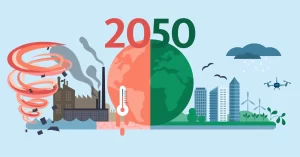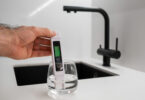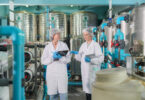As the global population grows and climate change intensifies, access to clean water has become one of the most pressing challenges. Millions face water scarcity, and traditional water sources are becoming increasingly unreliable. Solving the global water crisis requires innovative solutions, and water recycling has emerged as a critical response. By transforming wastewater into a reusable resource, water recycling offers a sustainable path toward alleviating water scarcity, supporting clean water solutions, and advancing global resilience.
Understanding Water Recycling and Circular Water Economy
Water recycling prepares wastewater for reuse in industry, agriculture, and occasionally even household consumption. A water recycling system is used in this procedure to eliminate pollutants and pathogens and return the water quality to safe levels. In a circular water economy, recycled water rejoins the water cycle, reducing dependency on fresh supplies and promoting communities, agriculture, and ecosystems.
By incorporating water recycling into our infrastructure, we can help solve the global water crisis and build a robust water supply system. Leading nations like Israel and Singapore are implementing this technology, demonstrating the viability and efficacy of the recycled water strategy on a broad scale.
Limited Freshwater Resources: Why We Need Water Recycling
Freshwater resources around the globe are under immense strain. According to the United Nations, water scarcity already affects four billion people for at least one month per year. Some of the fundamental problems include:
- Population growth and increasing demand. The world’s population is expanding rapidly, and the demand for freshwater rises as it does. Agricultural irrigation and industrial use also amplify water consumption.
- Pollution and wastage. Much of the world’s freshwater is polluted by human and industrial waste, making it unsuitable for consumption or use. Excessive water usage and inefficient practices also lead to vast volumes of waste.
- Uneven distribution. Freshwater resources are not evenly distributed worldwide. Some regions have an abundance of water, while others face perpetual shortages. The lack of infrastructure to transport and share water exacerbates this problem.
We must adopt sustainable solutions like water recycling and reuse to overcome these challenges. Water recycling, also known as water reclamation, treats wastewater to make it suitable for additional purposes like irrigation, industrial use, or even drinking. This helps reduce the demand for freshwater from lakes, rivers, and aquifers.
Some standard methods for recycling water include:
- Filtration and disinfection: Removes contaminants through filters and chemicals. Used for irrigation and industrial use.
- Reverse osmosis pushes water through a membrane to remove particles and impurities. It produces very pure water, which is used for drinking and high-tech industries.
- Distillation: This boils the water and then condenses the resulting steam. It is also used to produce very pure water for various applications.
By implementing water recycling and other conservation techniques, we can achieve water security and ensure freshwater access for current and future generations. But we must act now to avoid a potential global water crisis.
Common Pollutants in Wastewater and Treatment Methods
Typical pollutants in wastewater include organic matter, nutrients, pathogens, and toxic contaminants. Treatment methods remove these pollutants before the water can be safely discharged to the environment or reused.
Organic matter is broken down through biological processes in a multi-stage treatment system. Anaerobic bacteria first digest the waste in an oxygen-free environment to produce methane gas. Aerobic bacteria then further break down any remaining organics in the presence of oxygen.
Nutrients like nitrogen and phosphorus are removed through biological uptake and chemical precipitation. The pathogens are eliminated using disinfection methods such as chlorination, ozone treatment, or UV irradiation.
Toxic contaminants require advanced treatment techniques such as activated carbon adsorption, membrane filtration, ion exchange, or reverse osmosis. These methods effectively remove heavy metals, pesticides, pharmaceuticals, and other hazardous chemicals.
- Primary treatment: Physical separation of solids through screening and sedimentation. Removes 50-70% of solids.
- Secondary treatment: Biological oxidation and digestion of organic matter and nutrients. Removes 85% of BOD and solids.
- Tertiary treatment: Additional removal of nutrients and other pollutants through chemical/physical means. Removes 99% of pollutants.
- Advanced treatment: Targeted removal of specific contaminants of concern using specialized treatment processes.
With the appropriate combination of primary, secondary, tertiary, and advanced treatments, wastewater can be purified to meet stringent standards for safe discharge or reuse. We can capture and recycle more wastewater by improving treatment technologies and demonstrating political will to overcome water scarcity worldwide.
Water Recycling Technologies: An Overview of the Options
Several technologies are used for water recycling and reuse. The most common options are:
Reverse Osmosis (RO) uses a semi-permeable membrane to remove ions, molecules, and larger particles from drinking water. RO can remove many contaminants from water but is expensive and requires significant energy.
Microfiltration uses membranes with tiny pores to filter out contaminants like bacteria, protozoa, and some viruses. It does not require high RO pressures, so it tends to be more energy-efficient and cost-effective.
Ultraviolet (UV) light disinfection uses UV light to inactivate pathogens like bacteria, viruses, and protozoa in water. It is very effective and environmentally friendly, but it may require pre-filtration to remove particles that can block the UV light.
Distillation
Distillation water purification involves boiling the water and then condensing the resulting steam. This process leaves behind contaminants and minerals, yielding very pure water. However, distillation requires significant amounts of energy and can be expensive. The process also removes beneficial minerals from the water.
Ion exchange
People use ion exchange resins to remove heavy metals and some organic contaminants from water. However, they must periodically regenerate or replace the resins, which can generate waste. Ion exchange water softeners may also not remove all types of contaminants.
Choosing a suitable water recycling technology depends on the wastewater’s quality and the recycled water’s intended use of recycled water. A combination of technologies may be needed to treat wastewater for some uses, such as potable water. With increasing water scarcity, water recycling is a sustainable approach that makes the most of this limited resource.
Benefits of Water Recycling in Solving the Global Water Crisis
There are several advantages to implementing broad water recycling for water crisis management.
- Conserving Freshwater Resources: We can lessen our reliance on freshwater resources by recycling water, which frees up more water for drinking and other essential environmental requirements.
- Enhancing Ecosystem Health: Recycled water can restore wetlands and promote biodiversity, contributing to the Circular Water Economy and guaranteeing that natural ecosystems can access water.
- Eliminating the need for large-scale desalination plants and considerable water imports achieves long-term cost advantages, even though the initial expenditures on water recycling systems may be high.
Conclusion
Recycling water provides a way to address the water crisis, but it needs everyone’s support to be successful. Policymakers must acknowledge the significance of water-saving technologies and endeavor to develop laws that encourage water recycling. Public education, however, is crucial to changing attitudes and fostering confidence in recycled water.
As part of a clean water push, we must promote innovation, make infrastructural investments, and investigate decentralized and closed-loop technologies that enable water recycling in various geographical areas. By adopting a circular water economy and increasing recycling initiatives worldwide, we can contribute to restoring water supply and enhancing resilience against the growing threats of climate change and population increase.








